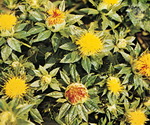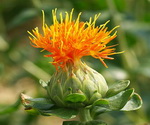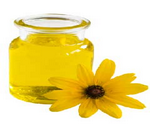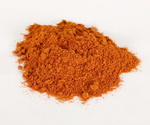|
Safflower – The Saffron Imposter



Safflower is a member of the Asteracaea family also known as the daisy family, the botanical name is Carthamus tinctorius. This plant is often mistaken for saffron. The flower is a stiff, thistle-like upright plant with a whitish stem that branches near the top. The leaves are serrated looking, oval, spiny, sharp-pointed with long tubular flowers that may be bright yellow, orange or red depending on the variety.
Origin The plant’s origin is not precisely known but it is believed to be native to Afghanistan and Egypt, while it is believed by others to have originated in India. History The flower is cultivated in Australia, China, India, the Middle East, and South Africa for its oil called safflower oil. Buying/Storage The flower which is about 1/100 the cost of saffron is often falsely sold as the much more costly saffron in most countries. When the two flowers are place side by side, it can be seen that the petals of the flower are more orange and with a wider, more angular shape than saffron which has long wire-like threads. The coloring ability is much like saffron, but the taste is different. When purchasing the real flower, it should be stored in an airtight packet in a cool, dark place.
Use The florets of the flower are used mainly to color food just as saffron is, but at a fraction of the cost, and used as the polyunsaturated oil that is extracted from its seeds.
For some great sections on herbs and spices some great references are: • The Spice and Herb Bible – Second Edition by Ian Hemphill with recipes by Kate Hemphill • The Food Encyclopedia by Jacques L. Rolland and Carol Sherman with other contributors • Field Guide to Herbs & Spices by Aliza Green • The Contemporary Encyclopedia of Herbs & Spices – Seasonings For The Global Kitchen by Tony Hill
Cooking Basics
|
Safflower Botanical Cycle

Daisy Family
Safflower
Tarragon





